JMM Insights: The Oldest Synagogues

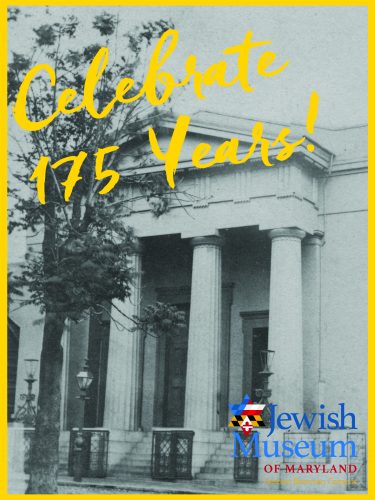
The Lloyd Street Synagogue is turning 175 years old! On October 1st we’re going to celebrate in (virtual) style with a fantastic evening of stories and memories about this one-of-a-kind landmark and we hope you’ll join us, along with host Sheilah Kast and historian Jonathan Sarna.
As a lead up to this exciting celebration, this week and next week’s JMM Insights are focusing on historic synagogues from around the world – and some fun trivia about our own Lloyd Street Synagogue.

If I ask you about the oldest standing synagogues in the US, you can probably name the Touro Synagogue in Rhode Island (built in 1763), K.K. Beth Elohim in South Carolina (built in 1840), and, of course, the Lloyd Street Synagogue (built in 1845). But do you know which US synagogue has the longest history of continuous use by a Jewish congregation?
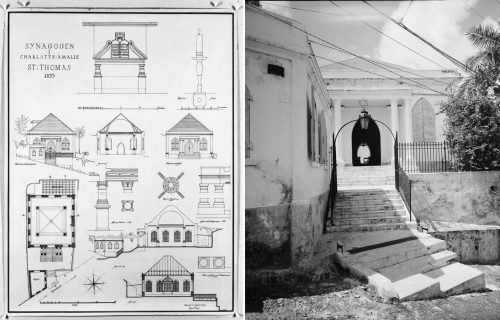
Congregation Beracha Veshalom Vegmiluth Hasadim (more commonly called the St. Thomas Synagogue) was built in 1833 in the U.S. Virgin Islands and has been in continuous use as a synagogue for 187 years! The St. Thomas Synagogue is also one of only five synagogues in the world with a sand-covered floor. You might enjoy this brief history of the synagogue and its congregation.
A little #LSSTrivia: Did you know that the Lloyd Street Synagogue was the only one of these four oldest standing synagogues in the US to not be founded by a Sephardic congregation?
Explore a list of the oldest synagogues in the United States here.
But what about outside the US? While archaeologists haven’t been able to find any actual synagogue building remains in Egypt, they have found quite a few stones carved with synagogue dedications, dating as early as the 3rd century, BCE! On the island of Delos, Greece is the Delos Synagogue, believed to have been built between 150 and 128 BCE – though the archaeological evidence that this building was indeed a synagogue is contested. (For those interested in some of the scholarly research, check out this 2007 article from the Bulletin of the Anglo-Israel Archaeological Society.)
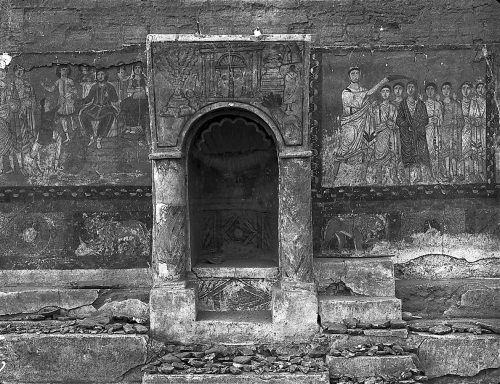
The Dura-Europos synagogue, located in what is now Syria, however, leaves no doubt of its status as a Jewish house of worship. The original building came into use as a Jewish meeting place between 165 and 200 CE but was enlarged and decorated during a renovation that ended in 245 CE. The Dura-Eurpos synagogue archaeological discovery is unique due to its preservation – the structure was uncovered nearly intact, with an estimate 60% of its detailed wall paintings still present. Yale University Art Gallery has a fascinating digital exhibit on the excavation of Dura-Europos. You can also see a reproduction video of the wall paintings here.
A little #LSSTrivia: Did you know that the Lloyd Street Synagogue is one of seventeen recorded archaeological sites in our neighborhood? Others include the Thomas Morgan Pottery; Clagett’s Brewey; and the Friends’ Meeting House. Especially into local archaeology? Check out the full text of the 2008-2009 archaeology report for the Lloyd Street Synagogue here.
In Western Europe, there are two buildings that represent the oldest, still-standing purpose-built synagogues – the Old (Alte) Synagogue of Erfurt, Germany (built c. 1100 CE) and the Synagogue of Santa Maria la Blanca in Toledo, Spain (built 1190 CE).

The Old Synagogue is considered one of the oldest, largest, and best-preserved prayer rooms from the Middle Ages in Central Europe. Like the Lloyd Street Synagogue, the Erfurt Old Synagogue is also known for its mikveh, the remains of which were discovered during renovation work in spring 2007. Get a peek at the Old Synagogue’s permanent exhibit about its history and collections here. Prefer to watch? Check out this video interview from Heritage Times with Erfurt’s UNESCO commissioner Dr. Maria Sturzebecher, More than Golden Treasure: heritage layers of Erfurt Synagogue Museum.
A little #LSSTrivia: Did you know, the earliest documented “keeper of the mikveh,” was Mrs. Jacaby in 1852, who may have been the seamstress Caroline Jacobs, who is noted as living on Watson Street, south of Lloyd Street in 1849.
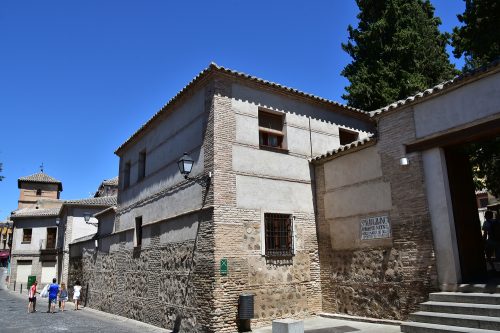
The Synagogue of Santa Maria la Blanca, originally know as the Ibn Shushan Synagogue, was built in Toldeo, Spain in 1180. Designed by Islamic architects, built in a Christian kingdom, and meant for Jewish use, this synagogue is considered a “symbol of cooperation” of three cultures living in the Iberian Peninsula during the Middle Ages. Like the Lloyd Street Synagogue, the building passed from use as a Jewish synagogue to a Catholic Church, but under much more contentious circumstances. Today, the Jewish communities of Spain have requested the Church return the building to the care of the Jewish people. The relatively plain exterior depicted above belies the uniquely beautiful interior shown below.
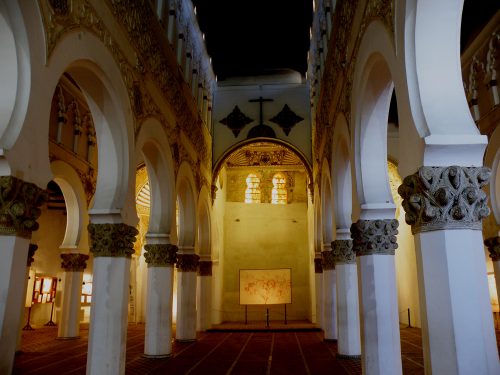
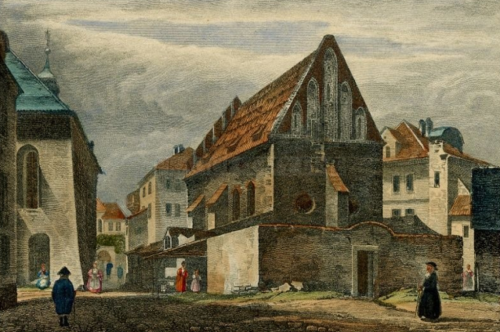
The oldest currently active synagogue in the world is located in Prague. Built in the 1270s, the “Old-New Synagogue” has another claim to fame – it is said to contain stones from the Temple of Solomon. But this isn’t the only legend surrounding the building – it is also cited as the resting place of the Golem of Prague.
A little #LSSTrivia: A popular Lloyd Street Synagogue myth from the past was the belief that LSS was a stop on the Underground Railroad. Unfortunately, there is no evidence to support this story, and it is unlikely that the synagogue’s rabbi of the time (Bernard Illoway) would have allowed the LSS to be a part of the Underground Railroad.
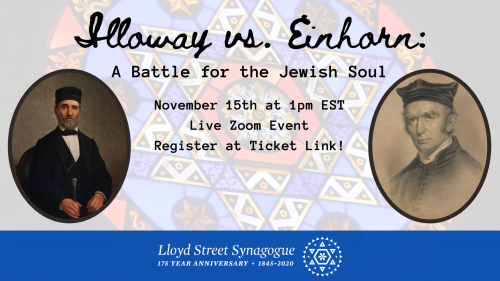
We hope you enjoyed this part one look at some of the oldest synagogues in the world, in honor of the Lloyd Street Synagogue’s 175th – next week we’ll share more highlights of historic buildings from around the globe. In the meantime, don’t forget to register for The Many Lives of Lloyd Street: A Synagogue Celebrates 175 Years.

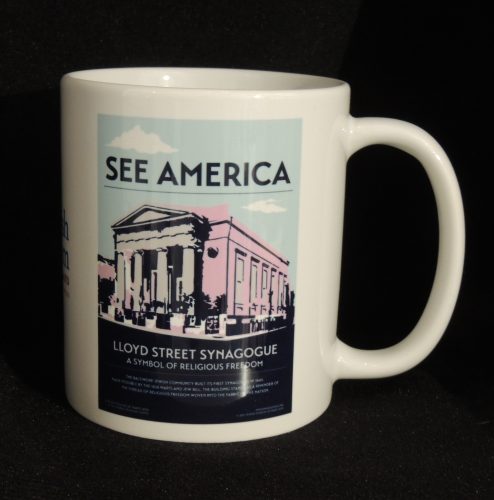
Pick up some LSS swag at our online shop, like this See America mug!
All purchases help support the Museum.

2 replies on “JMM Insights: The Oldest Synagogues”
Here is another good source of information:
Pre-1900 Buildings Erected as Synagogues and Still Standing
https://ajhs.org/rediscovering-jewish-infrastructure-table
Thanks for sharing Fred!